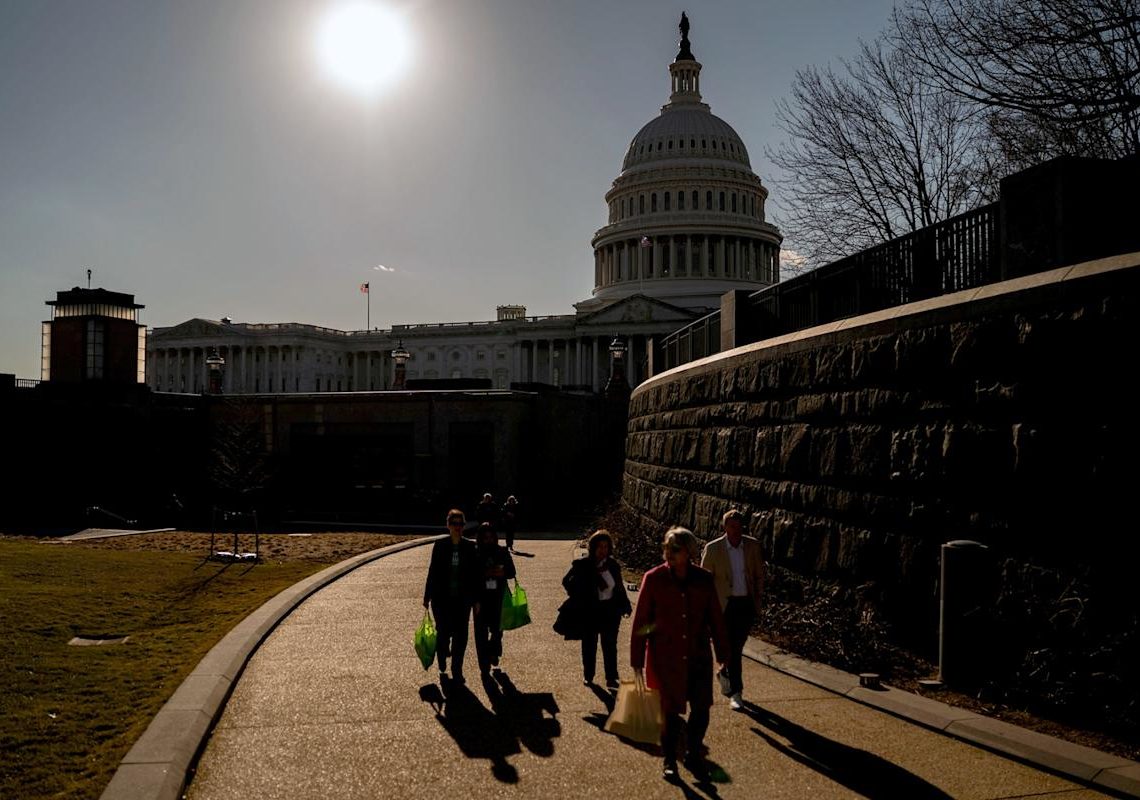(Bloomberg) — Federal agencies are preparing for a possible government shutdown with detailed plans that call for temporary furloughs but not permanent mass firings — even after the White House pressed departments to consider reductions in force as part of their contingency planning.
Most Read from Bloomberg
At least eight cabinet departments comprising more than two-thirds of the federal workforce had detailed their shutdown plans as of Monday afternoon. Together they call for more than 400,000 employees to be sent home as nonessential.
But those plans contained only one reference to permanent staffing reduction. The Centers for Disease Control and Prevention said it had 1,563 positions in “RIF status,” but it was unclear whether those reductions were previously authorized or part of the shutdown plan. Officials at the CDC and the Department of Health and Human Services did not respond to requests for comment about the language in the CDC contingency plan.
The White House budget office told agencies last week to propose job cuts as part of their shutdown plans — a thinly veiled threat to congressional Democrats that President Donald Trump might permanently wind down unfunded programs rather than put them on pause.
The Office of Management and Budget did not respond to questions about why agency shutdown plans didn’t follow up on that directive.
Downsizing the federal workforce can be a time-consuming process. Under civil service rules, affected workers must be given notice and may have “bumping rights” that allow more senior employees whose positions are eliminated to take another job. Unionized workers may have additional protections.
That’s one reason why Tesla CEO Elon Musk’s government downsizing initiative used a voluntary deferred resignation program he called the “Fork in the Road.” About 150,000 federal employees accepted the offer of six months or more of pay in exchange for exiting their role. For most who accepted, those paychecks run out at the end of the fiscal year on Tuesday.
During a government shutdown, essential employees continue to work. Those include workers in law enforcement, safety inspections and other critical positions. The definition of essential can be broad, and includes IT employees needed to preserve data, scientists working on biological research and mortuary affairs workers in the Department of Defense.
Under a 2019 law signed in Trump’s first term, both essential and nonessential workers automatically get back pay when the shutdown ends.
Agencies that had publicly released their shutdown plans by Monday included the departments of Defense, Education, Health and Human Services, Homeland Security, Labor, State, Justice and Veterans Affairs.
A shutdown plan for the Internal Revenue Service indicated that all 74,299 employees at the tax agency would continue to work during a shutdown. The Biden-era Inflation Reduction Act funded the IRS through 2031, so its authority to spend money doesn’t expire at the end of the fiscal year.
The Social Security Administration said it would furlough about 6,000 of its 51,000 employees.
–With assistance from Jessica Nix and Caitlin Reilly.
Most Read from Bloomberg Businessweek
©2025 Bloomberg L.P.
The post US Plans Thousands of Shutdown Furloughs But Silent on Firings appeared first on Bloomberg.




